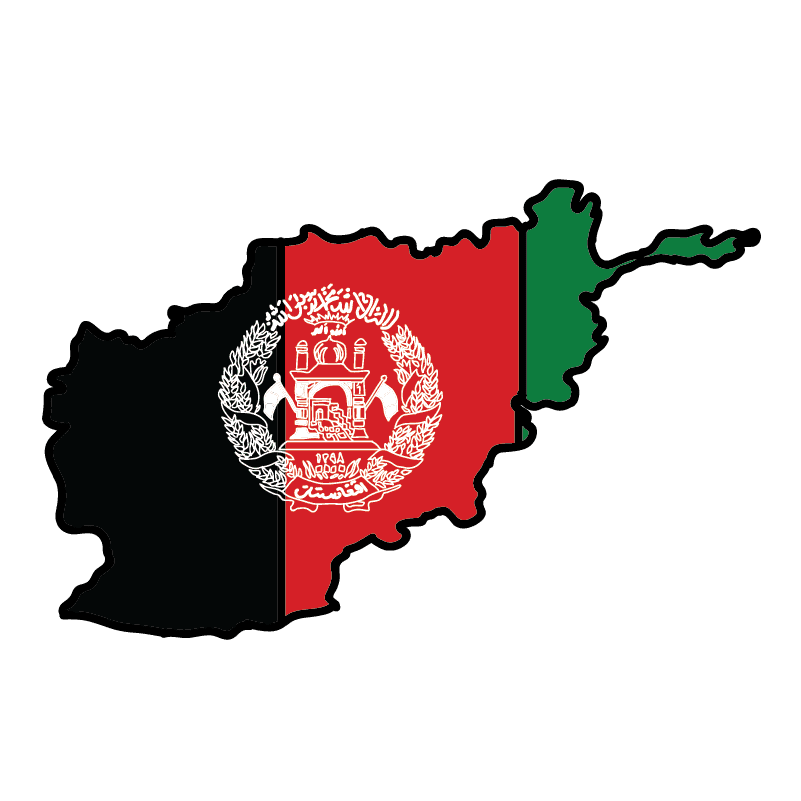In Afghanistan, the rose has been an integral part of the country’s culture and history for centuries. Afghanistan’s diverse climate and terrain have allowed for the growth of many different types of roses. These roses have played an important role in Afghan culture, traditions, and daily life. The rose is not only a beautiful flower, but it also holds great cultural, religious, and medicinal significance in Afghanistan.
Afghanistan is known for its Damask roses, which are endemic to the country. These roses have been cultivated for their oil, which is used in perfumes, cosmetics, and medicines. Additionally, the rose oil industry has been an important source of income for Afghan farmers. In the Nangarhar province, the “Roses for Nangarhar” project has encouraged farmers to switch from growing opium poppies to roses. This initiative has been successful in providing farmers with a viable alternative to growing illegal crops. In addition, it has helped to promote the sustainable growth of the rose industry in Afghanistan.
Despite the challenges faced by Afghan farmers, including political instability, conflict, and climate change, the rose industry continues to thrive in the country. Roses are not only grown for their oil but also for their beauty and cultural significance. The rose is considered a symbol of love and is often given as a gift on special occasions such as weddings and festivals. The history and culture of the rose in Afghanistan testify to the resilience and creativity of the Afghan people. They have been able to adapt to changing circumstances and preserve their cultural heritage.
Historical Roots
Roses have been an integral part of Afghan culture and tradition for centuries. The country’s diverse climate and terrain have allowed for the growth of many different types of roses. These flowers have played an important role in Afghan daily life. In fact, the cultivation of roses dates back to ancient times in Afghanistan.
According to historical records, roses were first introduced to Afghanistan during the reign of Alexander the Great. The ancient Greeks valued roses for their beauty and fragrance, and they brought them to Afghanistan as a symbol of their culture. Over time, the Afghans learned to cultivate roses themselves and began to appreciate their beauty and fragrance.
During the medieval period, roses became even more important in Afghan culture. The poet Rumi, who lived in Afghanistan during the 13th century, wrote extensively about the beauty of roses and their significance in Sufi mysticism. In his poetry, he used the rose as a metaphor for love, beauty, and spiritual enlightenment.
In addition to their cultural significance, roses have also played an important role in Afghan trade and commerce. Afghanistan has long been known for producing high-quality rose oil, which is used in perfumes, cosmetics, and medicine. Today, rose oil is one of Afghanistan’s most important exports, and it continues to be a vital part of the country’s economy.
Cultural Significance
Roses have a deeply rooted cultural significance in Afghanistan. The people of Afghanistan have a long-standing history of cultivating the rose, which has played an important role in their culture, traditions, and daily life. The country’s diverse climate and terrain have allowed for the growth of many different types of roses.
Afghanistan has a rich history and culture of rose cultivation, dating back to ancient times. The rose has been an important symbol in Afghan culture, representing love, beauty, and purity. It is often used as a decoration or a gift in traditional Afghan weddings. The rose is also used in traditional Afghan medicine, where it is believed to have healing properties.
In addition to its symbolic importance, roses are also grown for their oil, which is used in the production of perfumes, cosmetics, and other products. Afghanistan is known for producing high-quality rose oil, which is highly valued in the international market.
The people of Afghanistan have a deep emotional connection to the scent of roses, which is rooted in centuries of religious traditions and practices. As Muslims, they understand the rose as a divine symbol of the Prophet Muhammad. The scent of roses is often associated with spirituality and purity.
Overall, roses have played a significant role in Afghan culture and traditions. They continue to be an important part of the country’s identity.
Economic Impact
The cultivation of roses has had a significant economic impact on the households of Afghanistan. According to a study, the cultivation of roses as a cash crop has helped to increase the income of households in the Dari Noor district of Nangarhar Province. The study found that various factors such as the starting time of rose cultivation, the farmer’s age, education, training, work experience, the number of employed males, rose yields, agricultural yields, and government policies all had a significant effect on the income of households.
The rose industry in Afghanistan has also created employment opportunities for many individuals. The cultivation of roses requires a significant amount of labor, from planting to harvesting. This has created jobs for many individuals, particularly women who are often involved in the harvesting process. In addition, the rose industry has also created jobs in the processing and manufacturing of rose products such as rose oil and rose water.
The rose industry has also helped to boost the country’s exports. Afghanistan is known for producing high-quality rose products such as rose oil and rose water, which are in high demand in international markets. The country’s rose exports have helped to generate foreign exchange earnings, which are essential for the country’s economy.
Overall, the cultivation of roses has had a positive economic impact on the households of Afghanistan. The industry has created employment opportunities, increased household income, and boosted the country’s exports.
Artistic & Literary Influence
Roses have long been a source of inspiration for Afghan artists and writers. In the 16th-18th centuries, many literary figures originated from Afghanistan. Rose imagery was frequently used in their poetry and prose. Khushal Khan Khattak, a 17th-century Pashtun poet and warrior, is one of the most famous Afghan poets who used rose imagery in his works to express the tribal code.
In addition to literature, roses have also been a popular subject in Afghan art. Afghan art has been influenced by various cultures over the centuries, including Greco-Buddhist, Persian, and Islamic art. The Hadda archaeological site in Afghanistan has been a key center of Greco-Buddhist art from the 4th Century BCE to around the 7th Century CE. The site has yielded a large number of artworks, including sculptures, frescoes, and pottery, many of which feature floral motifs, including roses.
In contemporary Afghan art, roses continue to be a popular subject. Many Afghan artists use roses in their paintings, sculptures, and other artwork. For example, the Afghan-American artist Lida Abdul has created several installations that incorporate roses, including “White House,” a work that features a carpet of white roses spread out in front of a bombed-out building.
Overall, roses have played a significant role in Afghan artistic and literary traditions, and their influence can be seen in a wide range of works, from ancient frescoes to contemporary installations.
roses in Afghanistan
Afghanistan is home to a diverse range of rose varieties, many of which are endemic to the region. Below are some of the main rose varieties found in Afghanistan.
One of the most culturally significant rose varieties in Afghanistan is the Damask rose. These roses are known for their fragrant, pink and red blooms, which are often used in perfumes and other fragrances. They are also used in traditional medicine for their anti-inflammatory and anti-oxidant properties.
Gallica roses are a hardy variety that is well-suited to the dry, arid climate of Afghanistan. They are famous for their deep, rich colors and strong, sweet fragrance. Traditional medicine frequently utilizes Gallica roses due to their astringent and anti-inflammatory properties.
Afghanistan is home to many wild rose species, including Rosa beggeriana and Rosa damascena. These roses are often found growing wild in the mountains and other remote areas of the country. They are known for their hardiness and resilience and are often used in traditional medicine for their anti-inflammatory and anti-oxidant properties.
Roses Originating In Afghanistan
The Rose Directory website library catalogues roses from around the world. If there are any roses originating from this country, you can find a clickable list to explore below. If there are no roses listed, don’t worry – we will continue to add more roses to the catalogue in the future and more may appear then.

EXCLUSIVE Afghanistan COLLECTION
Visit Store
From Clothes & Apparel To Home Décor & Accessories. Free Returns. Unique Designs. Worldwide Shipping.
